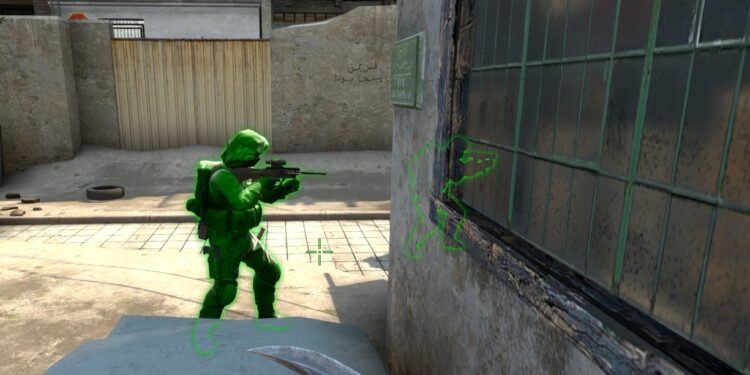Speedrunning with Cheats: How Glitches and Hacks Help Break Records

Speedrunning has become a unique subculture within the gaming community, where players aim to complete games as quickly as possible, often achieving times that seem impossible to the casual gamer. While most speedrunners pride themselves on their skill and knowledge of the game’s mechanics, others turn to a controversial practice: using cheats and glitches to shave valuable seconds off their runs. The use of rust cheats, for example, in the context of speedrunning has sparked debates about what constitutes legitimate records and how far players are willing to go to be the fastest on https://infocheats.net.
In the world of speedrunning, time is everything, and for some, no method is off the table when it comes to securing a world record. From exploiting glitches embedded in the game’s code to leveraging cheats that bypass normal gameplay limitations, speedrunners often push games to their limits in ways even developers never intended.
Glitches: The Foundation of Speedrunning
Glitches are unintentional flaws in a game’s programming, and for many speedrunners, they form the foundation of record-breaking runs. These bugs or inconsistencies can allow players to bypass obstacles, skip sections of the game, or manipulate mechanics in their favor. In some cases, these glitches can save minutes off a run, dramatically altering the path a player takes to complete a game.
For example, many speedrunners rely on techniques like “clipping,” where a character can pass through solid objects or walls due to a glitch in the game’s collision detection. This technique can help players skip large portions of a level or even teleport directly to the end. Other glitches, like the infamous “wrong warp” glitch, allow players to manipulate the game’s loading zones, transporting them to unintended locations.
Glitch-based runs are so popular that many speedrunning communities have distinct categories for them. For instance, there are “any%” runs, where the goal is simply to complete the game as quickly as possible, using any and all glitches available. In contrast, “glitchless” categories restrict the use of exploits, forcing players to rely purely on skill and optimized strategies.
The Role of Cheats in Speedrunning
While glitches often arise naturally within a game’s code, cheats are more deliberate. Hacks and cheats, such as rust cheats, are external tools or modifications that directly alter the game’s mechanics, giving players an edge. In speedrunning, cheats can be a double-edged sword. On one hand, they allow players to experiment with different strategies, testing the limits of a game. On the other hand, using cheats in competitive speedrunning is typically frowned upon, as it undermines the legitimacy of a player’s skill.
In Rust, for example, cheats that alter movement speed or damage output can significantly reduce the time it takes to complete objectives or defeat enemies. By manipulating the game’s physics or resource systems, players can create scenarios where they bypass normal limitations, cutting down on time that would otherwise be spent on crafting, gathering, or combat. These types of Rust cheats may not be widely accepted in the core speedrunning community, but they have found a niche among players looking to push the boundaries of what’s possible in-game.
One of the key distinctions within speedrunning communities is whether the use of cheats is disclosed. Speedruns that utilize cheats are often categorized separately from glitch-based or skill-based runs. These runs can serve as experimental showcases of what a game’s code allows when taken to its extremes, but they rarely hold the same prestige as “clean” runs achieved without external assistance.
Pushing Games to Their Limits
Both glitches and cheats can help push games beyond their intended boundaries, revealing unexpected ways to interact with the game world. For many speedrunners, part of the thrill comes from discovering how far they can manipulate a game’s engine to their advantage.
In some cases, the discoveries made through cheating or glitching lead to new, legitimate strategies. For instance, early speedrunners who experimented with cheats were often the first to uncover glitches that could be used in non-cheat runs. By experimenting with game-breaking techniques, they opened the door for future runners to find more efficient paths, helping to evolve speedrunning tactics over time.
Even developers can take note. Some embrace the speedrunning community, incorporating glitches into official records or allowing them to remain unpatched in future updates. Others take the opposite approach, releasing patches to close loopholes, preventing players from using exploits or cheats to gain an advantage. This dynamic relationship between players and developers is part of what keeps speedrunning vibrant, with games continually evolving in response to new discoveries.
The Future of Speedrunning with Cheats
As games become more complex, and as developers implement more sophisticated anti-cheat technologies, the role of cheats in speedrunning will continue to evolve. However, one thing remains clear: the quest to break records will always inspire players to push boundaries, whether through skill, glitches, or even hacks.
For many, speedrunning with cheats offers a unique opportunity to see games in a new light, uncovering hidden potential within their mechanics. Whether or not these runs are considered “legitimate” in the eyes of the wider community, they play a vital role in expanding the limits of what is possible in gaming.
In the end, speedrunning is about innovation—finding new ways to challenge what games can do, and sometimes that means bending the rules or even breaking them. Whether using rust cheats or other hacks, speedrunners will continue to test the limits of both their abilities and the games they play, in pursuit of those elusive world records.






